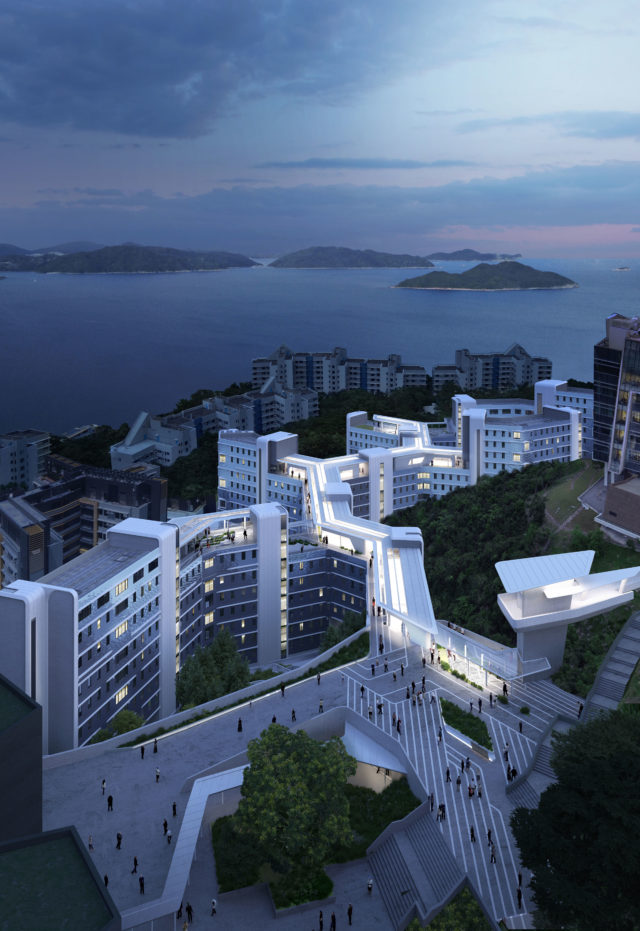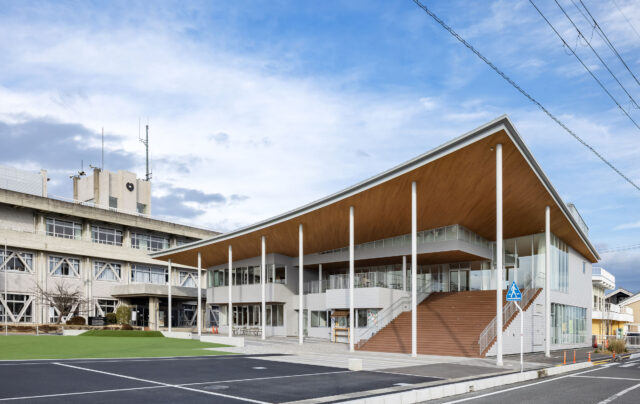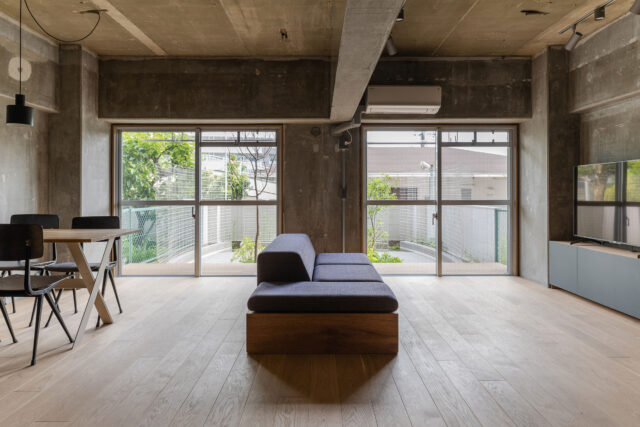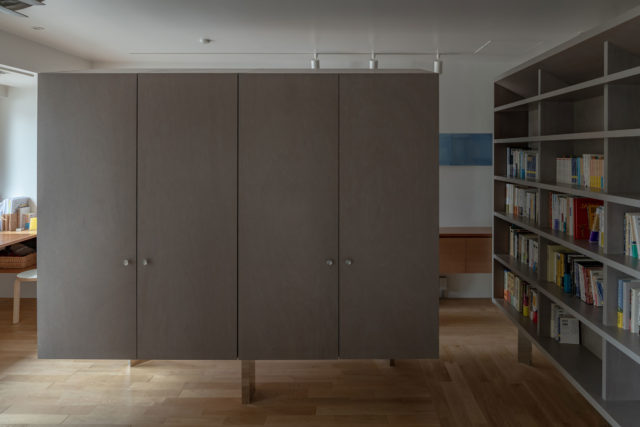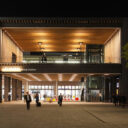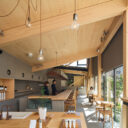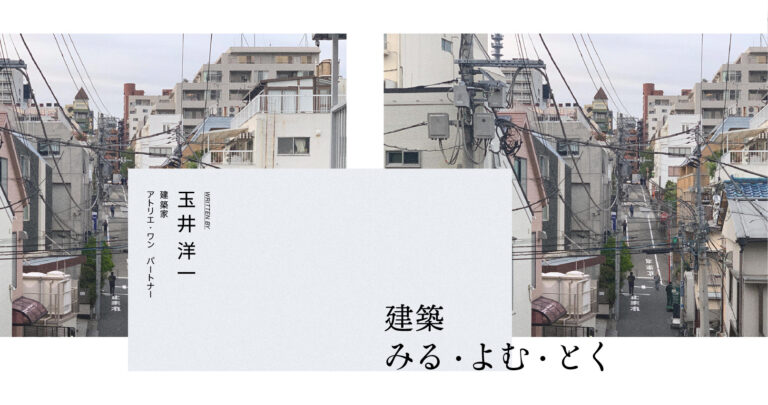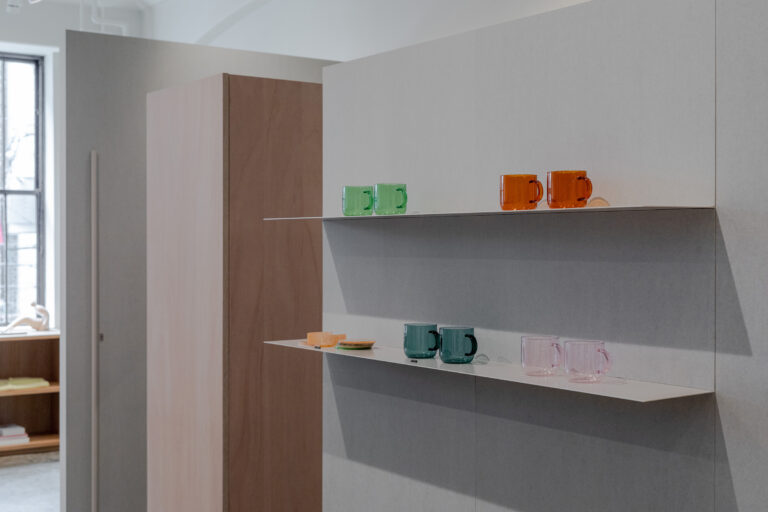
SHARE 加藤正基+松本光索による、大阪市の、近代建築内のアパレルショップ「Little $uzie Apartment Osaka」。特徴的な建築要素が残る空間と商品の架け橋となる中間的な要素を設計し、大小新旧がおおらかにつながり合う伸びやかな場としての店舗空間を構想



加藤正基+松本光索 / KOSAKUが設計した、大阪市の、近代建築内のアパレルショップ「Little $uzie Apartment Osaka」です。特徴的な建築要素(アーチ梁、装飾壁、大きな2つの窓など)が残る空間と商品の架け橋となる中間的な要素を設計し、大小新旧がおおらかにつながり合う伸びやかな場としての店舗空間が構想されました。
店舗が入居する大阪農林会館は、三菱地所設計の前身である三菱合資地所部営繕課の設計により1930年に竣工した建築です。店舗の公式サイトはこちら。
アパレルショップの内装計画。 場所は大阪・南船場にあるビル、大阪農林会館内で、1930年に三菱商事のオフィスとして建てられた近代建築の中には現在、ファッション関係のショップやオフィスなどが多く集まっている。
既存空間は建設当時の雰囲気を感じることのできるアーチ梁や装飾壁、大きな2つの窓がある特徴的な空間であった。依頼は内装設計であったものの、現状で十分魅力的な空間に新たに内装として手を加えることは、必要がないと感じた。
しかし、ヴィンテージビルとアパレルブランドの商品という明快な対比の構図を店舗空間として作ると、モノそれぞれには目が向かうものの、それらへの意識が自然と混ざりって生まれる空間を体験することは難しい。
そこで、既存空間と商品のスケールの架け橋となる中間的な要素を設計し、ドアノブや洋服から柱梁まで、大小さまざまな古さと新しさがおおらかにつながり合うことで、空間の全体性を浮かび上がらせることができないかと考えた。
以下の写真はクリックで拡大します
















以下、建築家によるテキストです。
アパレルショップの内装計画。 場所は大阪・南船場にあるビル、大阪農林会館内で、1930年に三菱商事のオフィスとして建てられた近代建築の中には現在、ファッション関係のショップやオフィスなどが多く集まっている。
既存空間は建設当時の雰囲気を感じることのできるアーチ梁や装飾壁、大きな2つの窓がある特徴的な空間であった。依頼は内装設計であったものの、現状で十分魅力的な空間に新たに内装として手を加えることは、必要がないと感じた。
しかし、ヴィンテージビルとアパレルブランドの商品という明快な対比の構図を店舗空間として作ると、モノそれぞれには目が向かうものの、それらへの意識が自然と混ざりって生まれる空間を体験することは難しい。
そこで、既存空間と商品のスケールの架け橋となる中間的な要素を設計し、ドアノブや洋服から柱梁まで、大小さまざまな古さと新しさがおおらかにつながり合うことで、空間の全体性を浮かび上がらせることができないかと考えた。
既存空間には、バックヤードやフィッティングルームを隔てる壁を建てず、どこにいても空間全体が見渡せるよう、什器や扉などをそれぞれ独立したボリュームとしてデザインし、その配置や構成によって店舗内をゾーニングした。また、それらのボリュームには、洋服や家具、空間のどれにも寄り付かない抽象的なスケールや素材感を注意深く設定することで、空間を構成するそれぞれの要素をつなぐ媒体のような役割を持たせた。
設計された媒体によって、あらゆるモノ同士が関連しあいながらも自由に振舞える、伸びやかな場としての店舗空間のあり方を模索した。
■建築概要
作品名:Little $uzie Apartment Osaka
所在地:大阪府大阪市
設計:加藤正基 / Masaki Kato, 松本光索 / KOSAKU
施工:嵩倉建設
延床面積: 61.4㎡
設計期間:2021年4月〜2021年5月
施工期間:2021年6月〜2021年7月
写真:衣笠名津美
| 種別 | 使用箇所 | 商品名(メーカー名) |
|---|---|---|
| 内装・床 | 床 | 既存コンクリート床の上、アクアカラーモスカーキ(アッシュフォードジャパン) |
| 内装・造作家具 | 造作家具1 | |
| 内装・造作家具 | 造作家具2 | フレキシブルボード |
| 内装・造作家具 | 造作家具3 | 十和田石 |
| 内装・造作家具 | 造作家具4 | ラワン合板 |
※企業様による建材情報についてのご意見や「PR」のご相談はこちらから
※この情報は弊サイトや設計者が建材の性能等を保証するものではありません
This Interior design project for an apparel store is located inside Osaka Norin Kaikan Minami-Semba, Osaka. This modern building was originally build in 1930 as an office for Mitsubishi Corporation. It is now home to many fashion-related stores and offices.
The existing space was characterized by arch beams, decorative walls, and two large windows that gave a sense of the atmosphere at the time of construction. Although the initial request was for an interior design, we felt it was unnecessary to change any of existing interior structure as it was attractive enough in its current state. It was easy to draw attention to each products if we create a store with a clear contrasting composition on a vintage building and and apparel brand products, but the experience of the space where awareness towards these things naturally mixes is lost. We proposed to design an intermediate element that would bridge existing space and products. This brings out the wholeness of the space by generously connecting new and old elements of various sizes, from doorknobs and clothes to pillars and beams.
In the existing space, we decided not to build walls which separates the backyard and fitting room, but designed each fixtures and doors as an independent volumes so that the entire space can be seen from anywhere and zoned the store by arranging and configuring each volumes. In addition, by carefully setting an abstract scale and materiality to these volumes so that they do not lean toward categories such as clothing, furniture, or space, each volumes act as a medium that connects each of the elements that make up the space. This project sought for a possibility of a flexible store space by having these designed mediums creating connections to all the elements in the space and acting freely at the same time.

